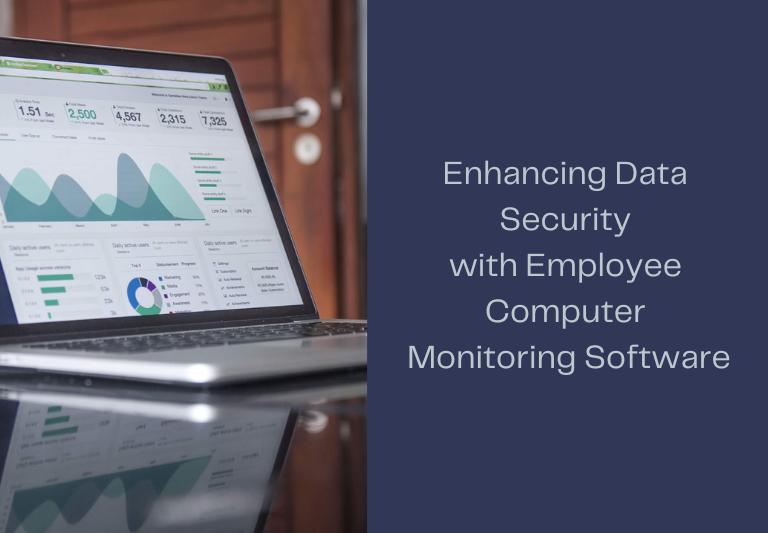Is Monitoring Software Effective In Employee Productivity?

What lies in the notion of employee monitoring software? How does it affect employee work productivity? There is a direct connection between employee monitoring software and increase in productivity. Did you know that companies using employee monitoring software report a 20% increase in productivity within the first six months? As more businesses shift to remote and hybrid work models, the need for effective monitoring tools has never been greater. spyrix.com, for example, offers comprehensive software that proves itself as an effective tool in this practice and used in many cases either business or personal. Now, we delve deeper into this notion and how it impacts on productivity rate.
What Is Employee Monitoring?
Employee monitoring is a process devoted to tracking an employee activity with the goal to access work-related activities of a single worker or a whole office. This practice, to be done well requires the installation of third-party (safe) software for activating the user-friendly dashboard with all records, including, but not limited:
time tracking (log in/log out)
web history
app’ activities
screen capture
face recognition
online/offline status
keystroke logging
This list introduces the most commonly checked positions if speaking about employee productivity monitoring.
What Is The Reason To Use Employee Monitoring In The Workplace?
Frankly speaking, there are numerous reasons to implement employee monitoring software. There are two major reasons to apply this technology, namely to increase the productivity of the staff and safeguard the sensitive company’s data. This technique facilitates prevention of company’s sensitive data leakage. Nobody will get access to the data labeled as confidential. Keylogger, for example, can be used as a tool applied to prevent unauthorized access to the data that can destroy the operational process of the whole company.
Other reasons include the following:
Enhanced accountability: Employees are more likely to stay focused and complete tasks on time when they know their activities are being monitored. This fosters a sense of responsibility in contributing to deadlines to be met.
Remote workforce management: For businesses with remote or hybrid teams, monitoring software provides a way to ensure employees stay productive and engaged, regardless of location.
Compliance with legal and company policies: Monitoring software helps ensure that employees follow company policies and industry regulations, offering protection against legal or compliance issues.
Better resource allocation: By analyzing how employees use tools and time, businesses can better allocate resources and optimize workloads, improving efficiency and reducing costs.
Further on, I want to pay more attention to employee performance monitoring and its effect on productivity.
What Is The Role Of Employee Productivity Monitoring In The Workplace?
This question is intriguing many before setting up employee computer monitoring software. The role of employee monitoring is to help businesses track how effectively the employees use working time and company resources. This allows for better management of workflows, task assignments, and time allocation.
One more role of monitoring employee performance is to enhance accountability in the working process, to meet the task’s deadlines. It helps workers to stay more focused which fosters the productivity level of a single worker, a department, or a whole office.
Additionally, productivity monitoring offers insights for employee development by stressing out individual strengths and areas for improvement. It is a universal solution for managers to make data-driven decisions about training, support, and workload distribution, ultimately creating a more balanced and productive work environment.
What Are Types Of Employee Monitoring Software?
Emerged as software, now it can be used differently for remote employee monitoring. There are two common types: cloud based (on cloud) and on-premise.
Cloud based employee monitoring software implies that tracking records are stored on the servers of the company-manufacturer. On-premise, in turn, requires the purchase of your own server to configure the software there; it is a rather complicated process.
Cloud based employee monitoring key features are:
Easy setup: The software is easy to install and doesn’t require extensive IT infrastructure. Users simply download the software, and all monitoring data is managed remotely.
Scalability: As businesses grow, they can easily add more users without investing in additional hardware. On-cloud solutions scale with the company’s needs.
Remote access: Managers can access data from anywhere with an internet connection, making it ideal for businesses with remote or hybrid teams.
Automatic updates: The provider manages updates and patches, ensuring the software is always up-to-date with the latest features and security improvements.
The key features of on-premise are also significant and can be considered as advantages:
Full control over data: All data is stored internally on the company’s servers, providing complete control over employee information and activity logs.
Customization: On-premise solutions often allow for greater customization based on the specific needs of the business, offering more flexibility in how the software is used.
Enhanced security: Since the data never leaves the organization’s internal infrastructure, it is more secure from external threats or breaches.
No ongoing subscription fees: On-premise solutions are typically a one-time purchase, though there may be ongoing costs related to maintenance.
How To Implement Employee Monitoring System Correctly?
Every business leader should understand that every employee has a right for a private life confidentiality. It means it allows to monitor only work-related activities; one more condition is to inform the employee’s activities are being tracked. Only transparent relations from the executives benefit the monitoring process.
Keep in mind that employee monitoring mission is to contribute to the working process and overall employee productivity rate.
Final Words
It is a confirmed fact that employee monitoring has a beneficial effect on employee productivity. When a worker is tracked, he is more focused, spending time predominantly on realizing work goals. Be transparent with your employees and start a successful way for your business advancement.


Comments